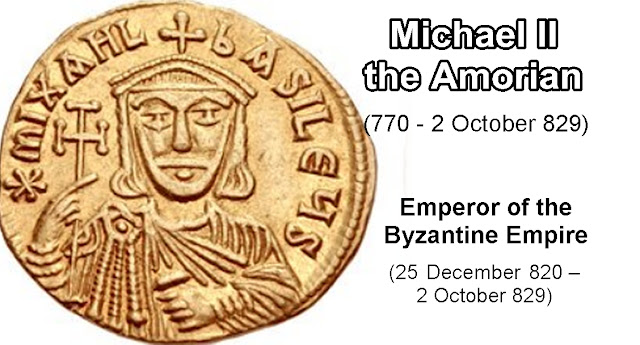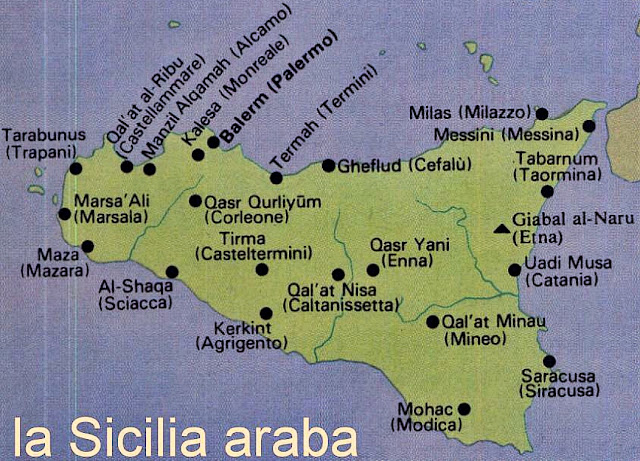In 535, Emperor Justinian I returned Sicily to the Roman Empire, now ruled from Constantinople exclusively. As the power of what is now known as the Byzantine Empire waned in the West, Sicily was invaded by the Rashidun Caliphate during the reign of Caliph Uthman in the year 652. However, this first invasion was short-lived, and the Muslims left soon after.
The first true conquest expedition was launched in 740. In that year the Muslim prince Habib, who had participated on the 728 attack,
successfully captured Syracuse. Ready to conquer the whole island, they were however forced to return to Tunisia by a Berber revolt. A second attack in 752 aimed only to sack the same city.
The opportunity for the Aghlabid emirs of Ifriqiya came in 827, when the commander of the island's fleet, Euphemius, rose in revolt against the Byzantine Emperor Michael II. Defeated by loyalist forces and driven from the island, Euphemius sought the aid of the Aghlabids. The latter regarded this as an opportunity for expansion and for diverting the energies of their own fractious military
establishment and alleviate the criticism of the Islamic scholars by championing jihad, and dispatched an army to aid him. Following the Arab landing on the island, Euphemius was quickly sidelined. An initial assault on the island's capital, Syracuse, failed, but the Muslims were able to weather the subsequent Byzantine counter-attack and hold on to a few fortresses. With the aid of reinforcements from Ifriqiya and al-Andalus, in 831 they took Palermo, which became the capital of the new Muslim province.
The Byzantine government sent a few expeditions to aid the locals against the Muslims, but preoccupied with the struggle against the Abbasids on their eastern frontier and with the Cretan Saracens in the Aegean Sea, it was unable to mount a sustained effort to drive back the Muslims, who over the next three decades raided Byzantine possessions almost unopposed. The strong fortress of Enna in the centre of the island was the main Byzantine bulwark against Muslim expansion, until its capture in 859. Following its fall, the Muslims increased their pressure against the eastern parts of the island, and after a long siege captured Syracuse in 878. The Byzantines retained control of some fortresses in the north-eastern corner of the island for some decades thereafter, and launched a number of efforts to recover the island until well into the 11th century, but were unable to seriously challenge Muslim control over Sicily. The fall of the last major Byzantine fortress, Taormina, in 902, is held to mark the completion of the Muslim conquest of Sicily.
Although few strongholds in the northeast remained unconquered and in Christian hands, the fall of Taormina marked the effective end of Byzantine Sicily, and the consolidation of Muslim control over the island.
In 963 the Muslims attacked the last remaining Christian stronghold on the island, Rometta, which prompted an expedition sent by the Byzantine emperor, Nikephoros II Phokas, to recover Sicily. The Byzantines were at first successful, recapturing Messina and other fortresses in the northeast, but were repulsed before Rometta itself, and retreated back to Calabria. In the next year, they tried to resume their offensive, but were annihilated in the Battle of the Straits off Messina. As a result, a lasting truce was concluded by the two powers in 967.







